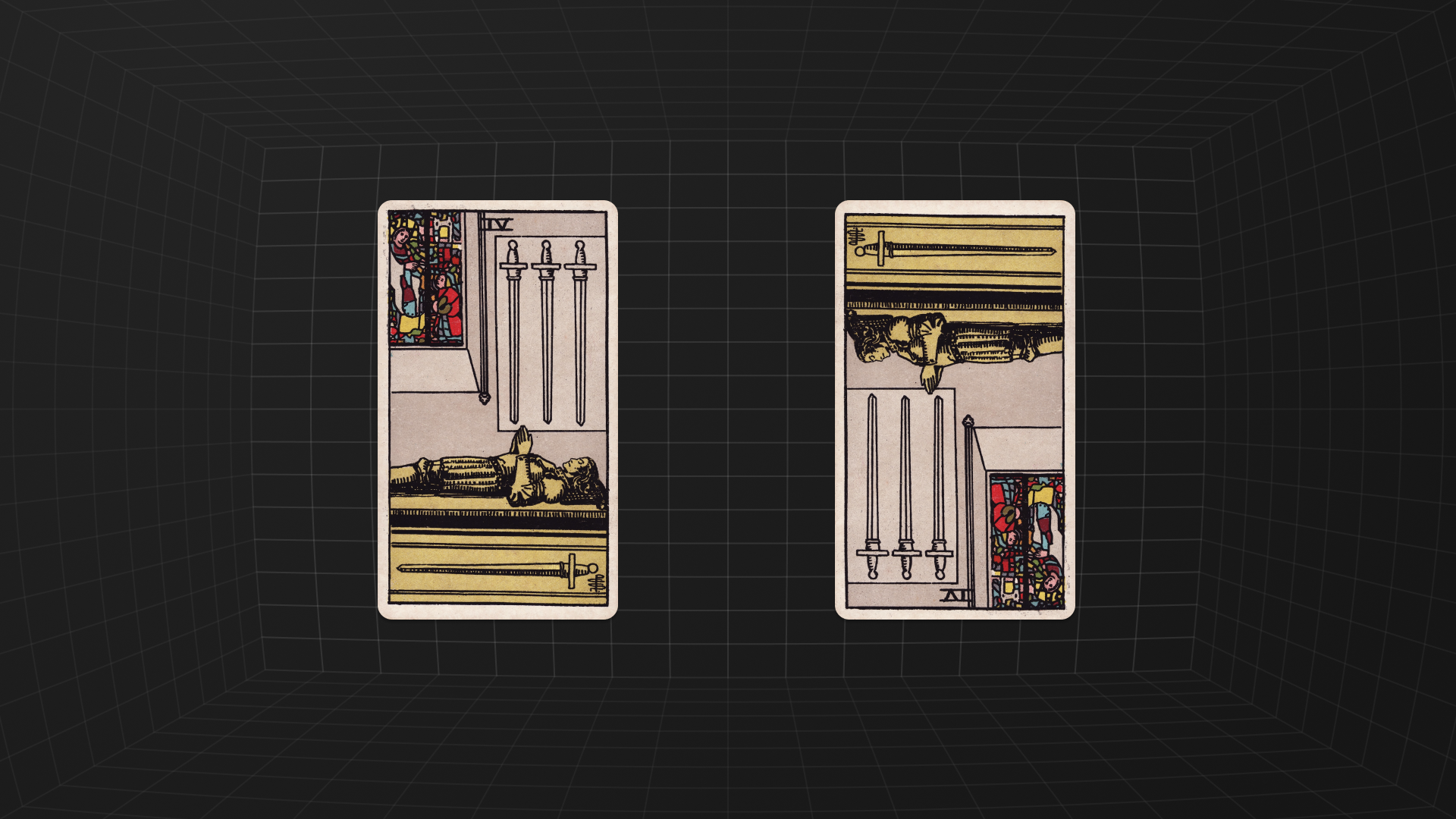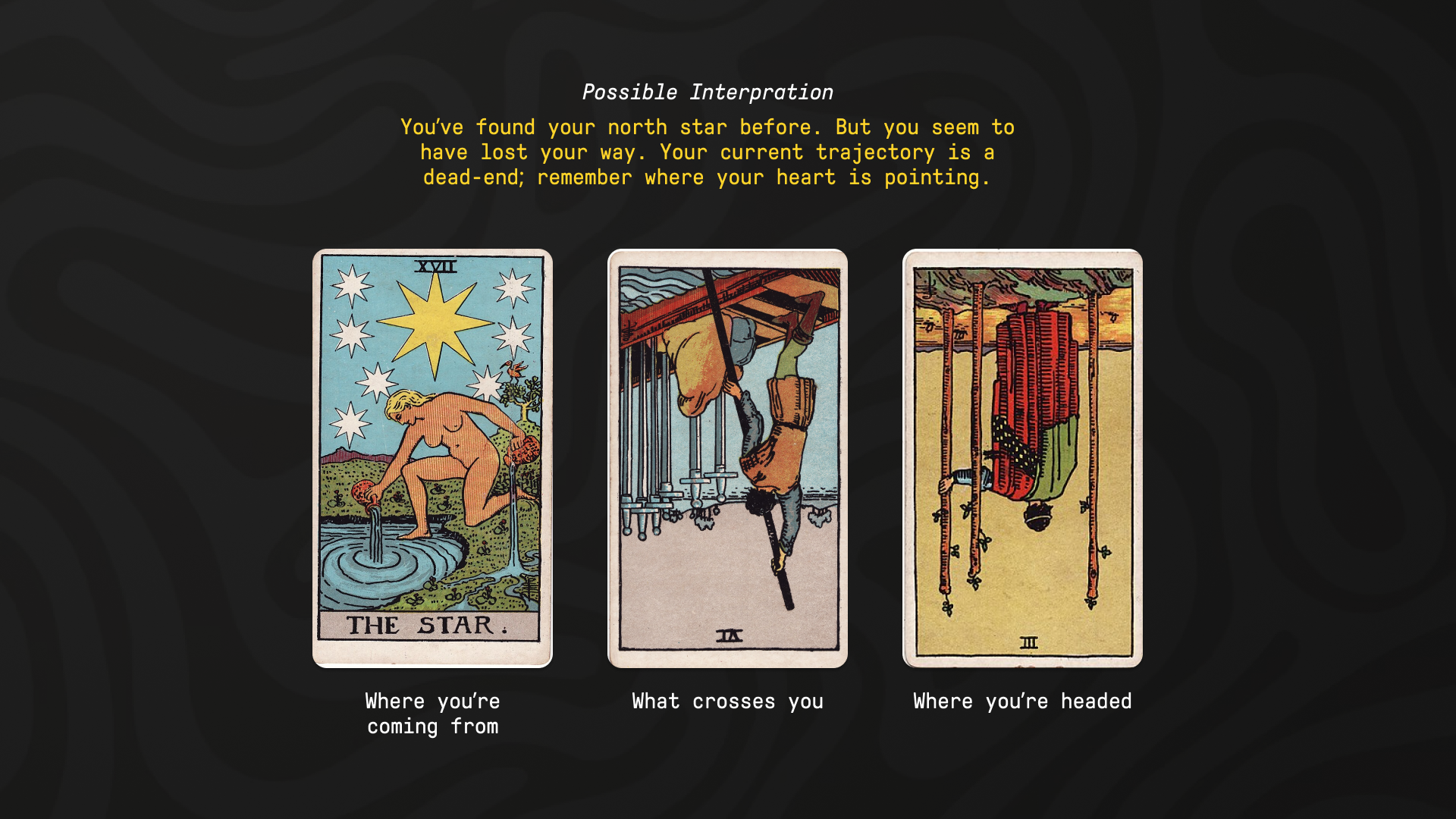We generally interpret reversals as the opposite of the card. 1 This is not a bad way to interpret them. The cards respond to your energy—if that’s their shuttle, they can foster strong interpretations.
But the tricky thing about reversals is that, if we approach them as the “opposite” of the upright messaging—which part of it is opposite? For example, take the IV of SWORDS. This card is typically about rest, so a reversal may imply that it’s time to get up and back to work. But what if instead it was about not getting true rest? i.e., the threat of swords below you making you anxious and not able to rest well. There is much ambiguity here!

Perhaps another approach might be to think of the reversal in relationship to the cards around them. For example, maybe the reversal simply changes the direction.

The most nuanced guidance that I’ve received is from learntarot.com;
When a card is upright, its energy is free to manifest. Its qualities are available and active. When a card is reversed, its energy is not fully developed. It may be in its early stages, or losing power. It may be incomplete or unavailable. The qualities of the card are present, at least in potential, but they can’t express completely.
Ultimately, the discussion here is intended to help you figure out your toolkit. Intentionality is the name of the game—and when you hold your tool with intent, you can get really good at this stuff.
Some people advise new readers to ignore reversals, and I would argue that you—as the querent—should flip flop between using them and not every once in a while. When you’re unsure of what the best tool to use is, (because you have so many at your disposal), it can help massively to reel in your toolset and do purely upright. When I’m a rut, this seems to always help.
Footnotes
-
e.g. V, THE HIEROPHANT may represent
conformitywhen upright, butrebellionwhen reversed. ↩